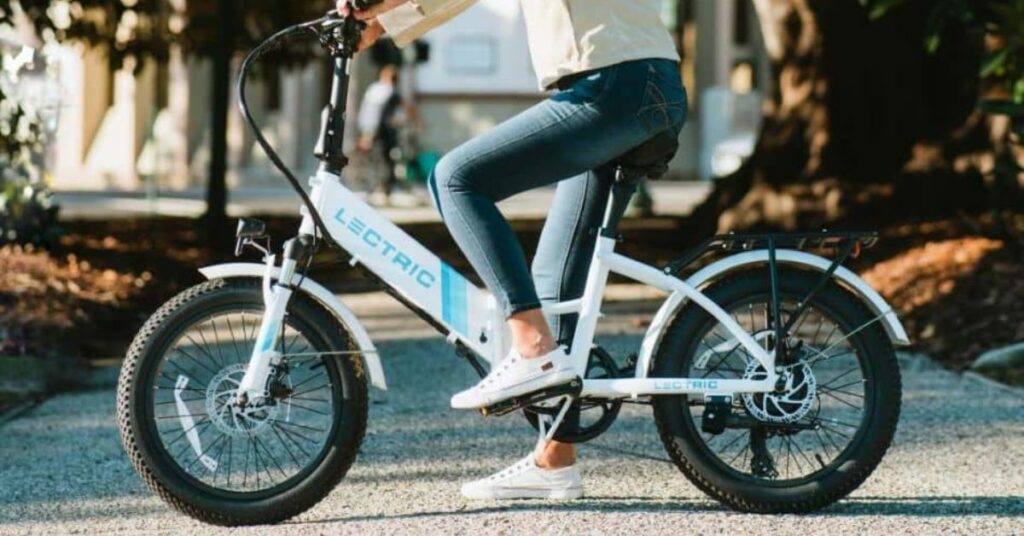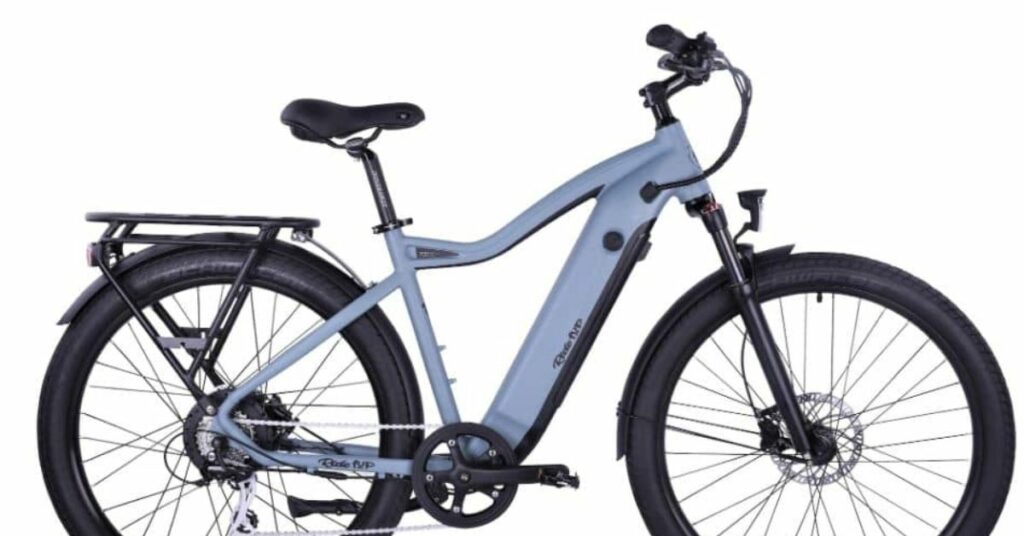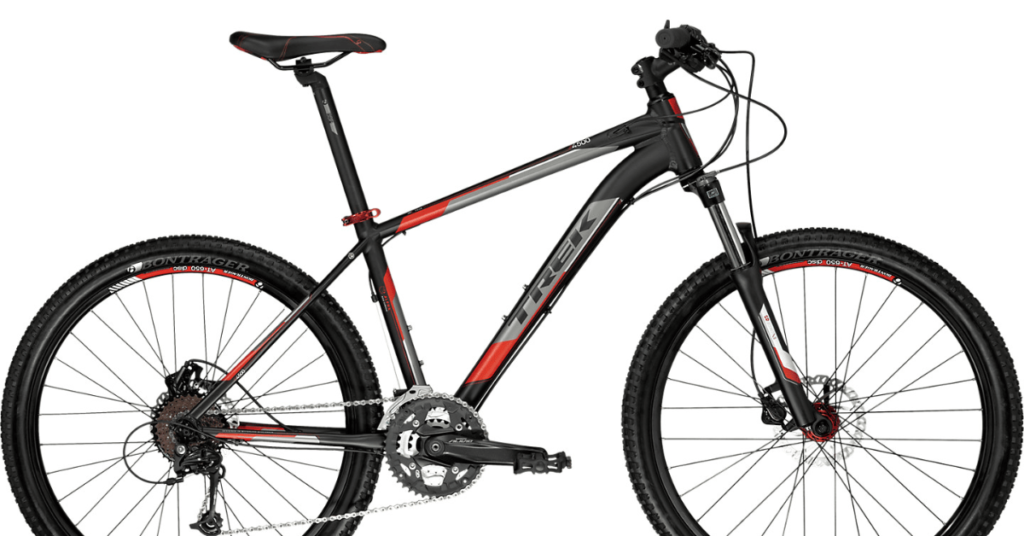(Last updated on March 15th, 2023)
When I first got into cycling, the idea of tires and tubes seemed overwhelming. But it all started to make sense after I purchased a few bikes with different-sized tires. Finding the right tube size is pretty easy once you know how to find the size of your bike’s tires.
In this article, I will discuss finding the right bike tube size.
First, I’ll go over the most common sizes of bike tires and tubes and explain how you can find the size of your bike tire and rim. Then, I’ll also talk about getting the correct valve stem. But first, let’s take a quick look at why we need tubes in the first place.
Let’s get started.
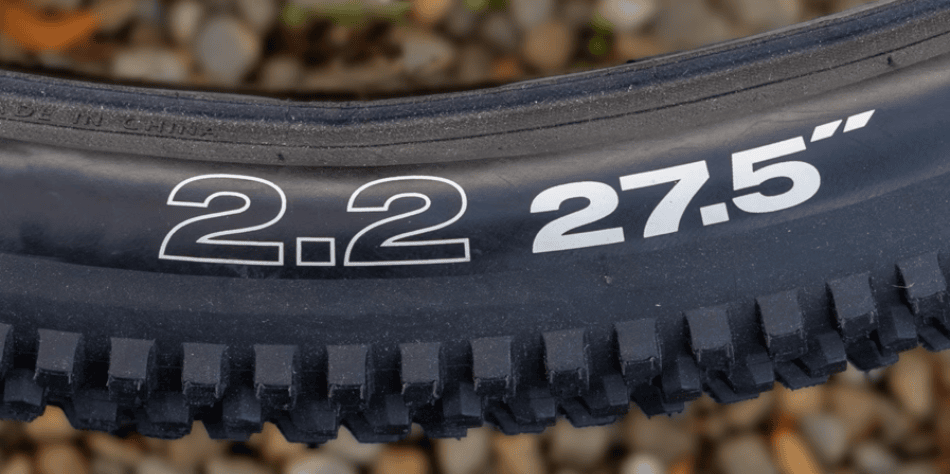
Why Do I Need a Bike Tube?
Typical bikes have a wheel made up of the rim (the hard part of the circle that connects to the hub with spokes), the tire (that’s the rubber part on the outside), and the inner tube. Some bikes are tubeless and don’t need tubes, but most do.
The tube is part of the wheel that holds the air and sits between the tire and the rim. So when you pump up your bike tire, you are actually pumping up the tube inside.
It’s always a good idea to keep a spare tube with you when riding in case you get a flat tire out on the road.
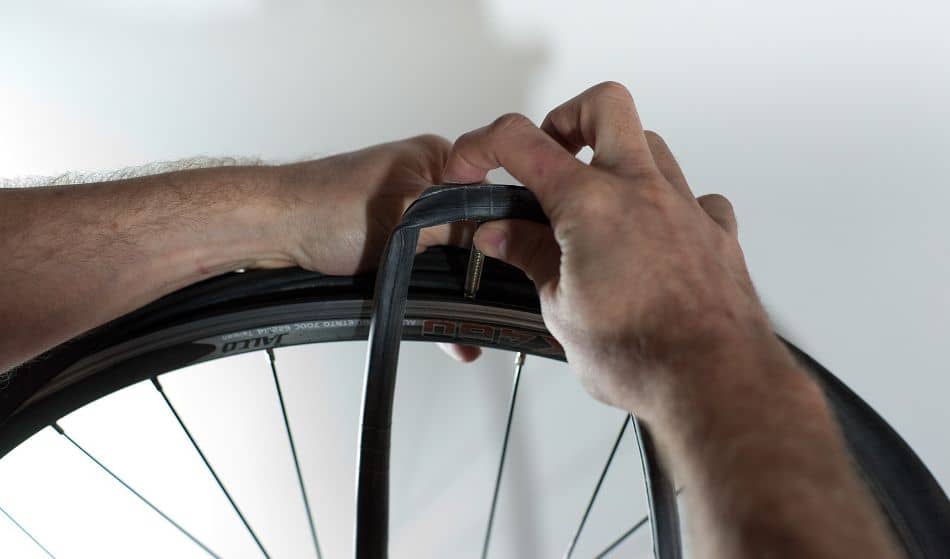
What Do I Need to Know About Bike Tubes
Type of Riding
First of all, the type of riding you do will help dictate what type of inner tube you need. For example, if you are into racing, you’ll want to go for a super thin tire.
On the other hand, if you’re riding gravel or even racing cyclocross, you may want a thicker and sturdier tube for more puncture protection.
Fat tire bikes are usually tubeless! On the other hand, even some electric scooters have tubes. The type of riding and type of bike you ride will affect what tube you need to use.
Wheel Size and Diameter
The most critical aspect of choosing the right size tube is knowing your size tire and wheel. Your tire size will be written on the side of the tire. It’s sometimes hard to see, especially if it is covered in dirt. You may need to wash it off or shine a light on it to see the numbers if they are molded into the tire rather than printed on.
You will look for a number that tells you the tire size. Depending on the brand, it will use the French, Imperial, or ISO system or maybe even give you two of the three.
For example, the Ride1Up 700 Series has a 27.5-inch wheel with a 2.4-inch tire. On the sidewall, it will say 27.5 x 2.4, so you’ll know what tube to get.
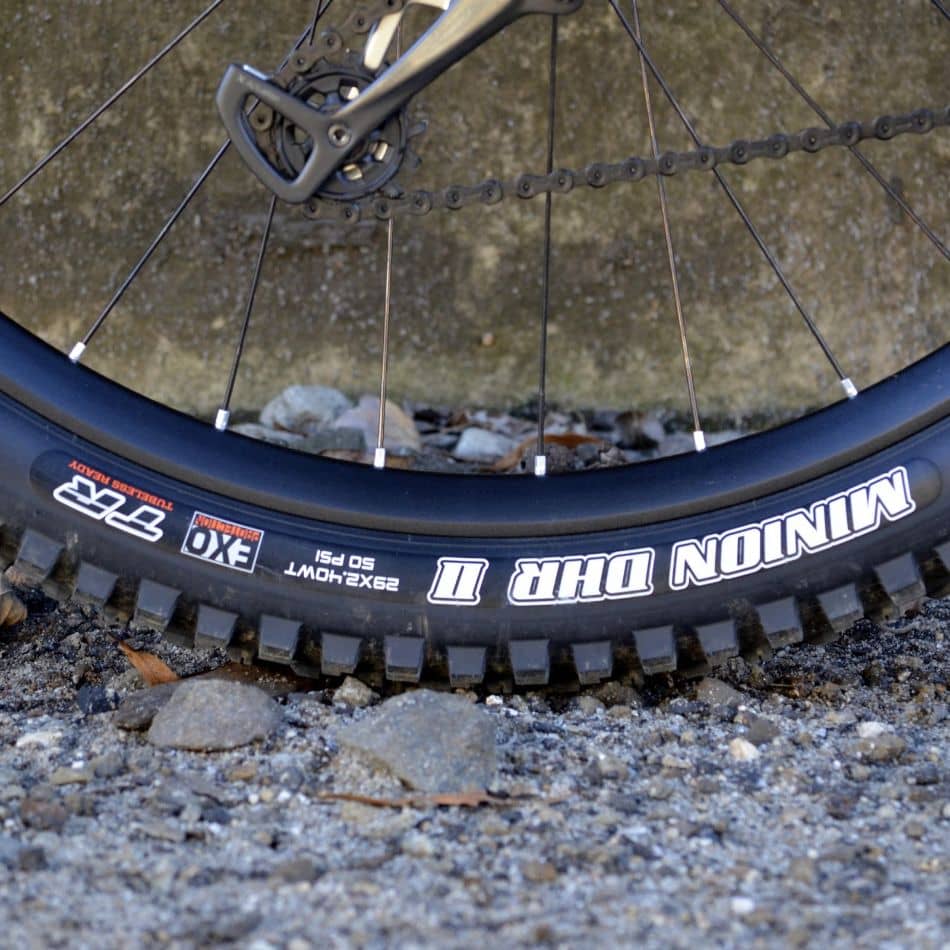
Bike Tubes According to Cycling Discipline
Road Bike, Gravel, and Cyclocross Tires
In the French system, you’ll see a 700C x 28mm number. This means your wheel is about 700 mm in diameter, and the tire is 28mm wide. You’ll see a number in the ISO system that looks like 28-622. This means the same thing. In this case, you’ll need a 700c tube that can fit a 28mm wide tire.
Mountain Bike and Hybrid Bike Tires
Mountain bike tires are usually designated a little bit differently. They don’t usually use the French system. Instead, they’ll use the American system.
So on your tire’s sidewall, you’ll look for a number that represents the size of the tire followed by the width of the tire. For example, a Maxxis mountain bike tire will have on its sidewall 29 x 2.5. These are the circumference of the tire in inches followed by the tire’s width in inches.
Once you know the size of your tire, then you can choose your tube. You’ll want to look for a tube that matches your tire size as closely as possible. Most tubes sold today are made for a specific wheel circumference but will fit a range of tire widths. This is because inner tubes are stretchy, and you can pump them up to the size you need (within reason).
Here are a few examples of common tire sizes and their associated tube size. Remember this is just a guide; individual brands may vary their tube sizes.
| Bike Type | Wheel Size | ISO Size | Width in MM | Typical Tube Size |
| Road | 700C | 622 | 232528 | 700cx 20 – 25 mm700c x 25 – 32mm700c x 25 – 32mm |
| Gravel | 650B700C | 584622 | 28mm-37mm37mm-42mm | 700c x 28-37 mm700c x 37 – 42mm |
| Mountain | 26in27.5 inch29 inch | 559584622 | 2.0 – 3.25 inches | 26, 27.5, or 29 by: Up to 2 inch2 – 2.3 inch2.3 – 2.6 inch |
| Hybrid Bike | 700c | 622 | 28-50mm | 700c x 28 – 37mm, 700C x 37 x 42mm |
| Cruiser Bike | 26 inch | 559 | 1.75inches – 1.125 inches | 26 inch by 1.75 – 1.125 inches |
| Fat Bike | 26 inch27.5 inch | 559584 | 3.8 – 5 inch | Over 3 inch |
| Brompton | 16 inch | 305 | 35 mm | 16-inch by 35mm |
| BMX | 20 inch | 406 | 2.3 to 2.4 inches | 20 x 2.3-2.4 |
Valve Type
You also need to know your valve type to choose your bike tube. You’ll either need a Presta Valve or a Schrader Valve. Schrader valves are fatter and look like the type of valve you have on your car. You’ll find them on lower-end bikes and kids’ bikes.
On the other hand, higher-end bikes tend to have Presta valves. They’re usually taller and much thinner because it means you can put a smaller hole in the rim to fit the valve through.
Getting the right valve is important because the diameters of the valves are different. For example, Presta valves won’t work well in Schrader rims; Schrader valves won’t fit into Presta-style rims.
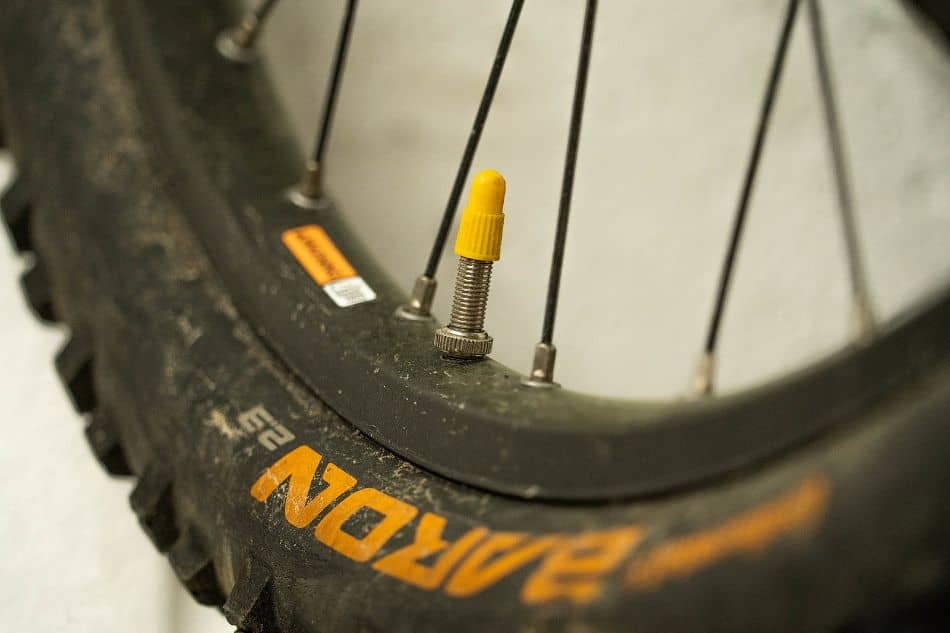
Valve Length
The valve length is important because the valve has to go from the tube through the rim and have enough stem sticking out of the rim for you to be able to fit the head of your tire pump onto.
The easiest way to do this is to measure the length of the stem on the tube you already have in mm.
You can use the rim depth if you don’t know the valve stem length, and then compare it to this chart.
| Rim | Rim Depth | Valve Stem Length |
| Low Profile Rims | 25mm | 40mm |
| Medium Profile Rims | 35-45mm | 60mm |
| Deep Rims | 50mm or more | 80mm |
Tube Material
You may also want to choose your tube material and thickness based on the type of riding you’ll be doing. Tubes are typically made of butyl or latex.
Butyl rubber tubes are the least expensive and the most common. They’re a bit thicker and heavier, making them slower but easier to repair.
You can also purchase thin-walled butyl tubes, saving a bit of weight.
Latex tubes are great for racing because they are lighter and have less rolling resistance. But, unfortunately, they’re also more expensive, leak air quickly, and are harder to install and repair.
If you are racing on the road or track, you may want to consider latex tubes. However, if you are doing cyclocross or mountain biking where the chance of a flat is high, you’ll probably want a thicker butyl tire.
What Size Bike Tube Do I Need?
While we looked at the specifics of each bike and tube, let’s review some of the most popular sizes to get you in the ballpark of the size tube you need. This way, you’ll know what to look for when you read the sidewall of your tire.
Road Bike
If you are riding a typical, modern road bike, you’re probably on a 700c (622 ISO) wheel. The most popular widths right now are 23, 25, or 28, so look for a tube that fits your exact dimensions:
- 700c x 20-25
- 700c x 25-32
Gravel Bikes
Most gravel bikes will either be 650B or 700C, so you’ll want to ensure you get the correct wheel size and width. You’ll probably be looking at a tube that is
- 650Bx37-42mm or
- 700c x 32-37mm
Mountain Bikes
Mountain bikes use American sizing in inches. You’ll want a thick butyl tube for flat protection, but you’ll also want to make sure you have your rim size correct because there are three possibilities, with widths anywhere from 2 to 3.25 inches:
- 26-inch (ISO 559)
- 27.5 (ISO 584)
- 29-inch (ISO 622)
You may have noticed that 29-inch tires have the same ISO number as 700C tires. This is because these rims have roughly the same circumference, it’s true, but you’ll find that mountain bike rims are much wider than their road bike counterparts. So you won’t be able to use the same tubes on a road bike as you would on a mountain bike because mountain bike tubes are much fatter.
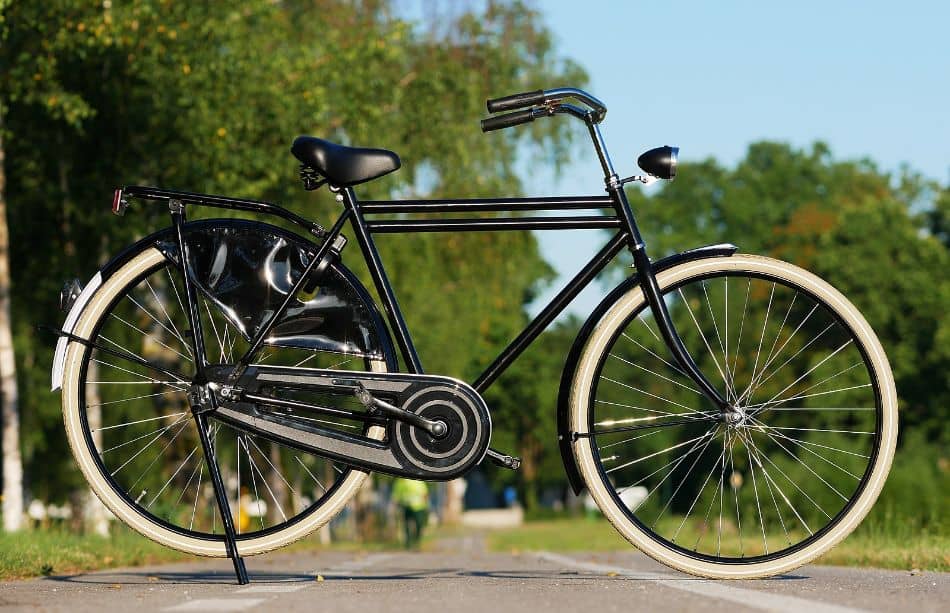
Hybrid Bikes
Hybrid bike tubes are similar to gravel bikes. You’ll find that they typically run about 700C x 28-50mm. Remember that hybrid bikes are hybrids, so they aren’t identical. They may have different size tires and wheels.
Cruiser Bikes, Fat Bikes, and BMX Bikes
These specialty bikes have unique wheels and tires, depending on the brand. So you’ll need to look closely to ensure you get the correct size for your specific bike.
Final Thoughts on What Size Bike Tube
Although the details may seem complicated, finding the right bike tube is as simple as finding the size on the side of your tire wall and matching it up to the tube size as written on the box. If you can’t figure it out, take a picture of the writing on the side of your tire and take it to your local bike shop. They can decipher the numbers for you and help you to find the right tube. They can even install it for you or teach you how to do it yourself. If you have a vintage bike or an unusual size tire, you may need to purchase your tube online.
Frequently Asked Questions
Children’s bikes usually come in standard sizing: 12, 14, 16, 18, and 20 inches. Since the widths are generally standard across bike brands, you don’t need to know the width. Instead, just choose a quality tube in the right size.
Tubeless tires are special tires with a sealant that reduce the risk of flats. And while they don’t use tubes, I find it is a good idea to carry a tube with you if the sealant inside fails.
Most butyl tubes are easy to patch if you get a small hole. However, latex tubes are very difficult to patch, and the patch is more likely to fail.
Under perfect conditions, tubes have been found to last up to 15 years! However, if you are riding your bike regularly, you’ll probably get a few flats. After patching the tube a few times, it will probably need to be replaced.
You can purchase tubes at your local bike shop, online, at sporting goods stores, or even big box stores.

Amanda Whittington is an expert writer, impassioned cyclist, and musician. Coming from a diverse educational background, Amanda discovered a deep-rooted passion for encouraging others through her love of all things cycling, writing, and inspiring hope.
You’ll likely find Amanda pouring over bike specs, comparing the hottest cycling tech, and sporting the latest jerseys while juggling the demands of her editorial calendar, training schedule, tiny homestead, and 6 busy kids.
She spends her free time absorbed in her own gardening and fitness, cycling, and reading, all while encouraging adoption and foster care, championing the underdog, and of course, working with her chickens and goats.


